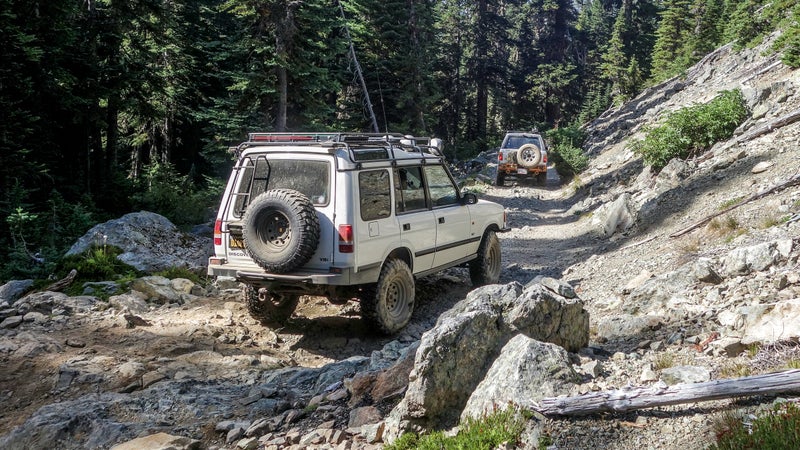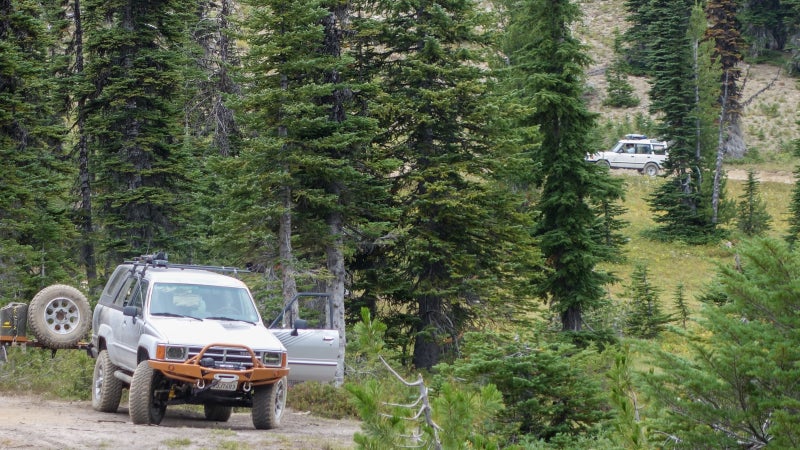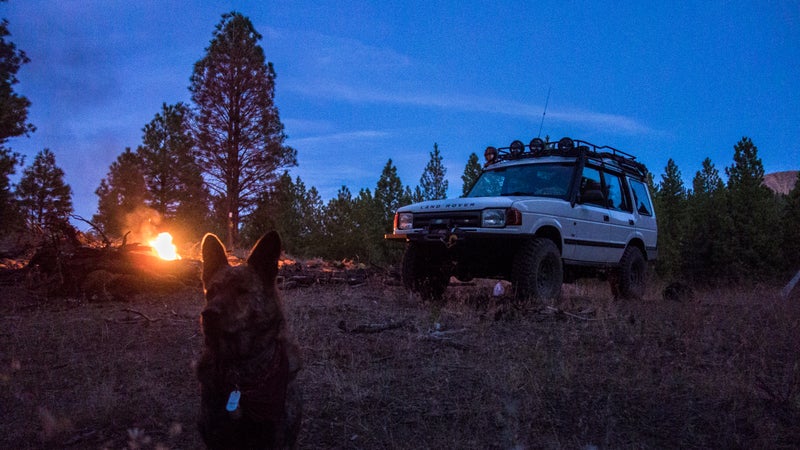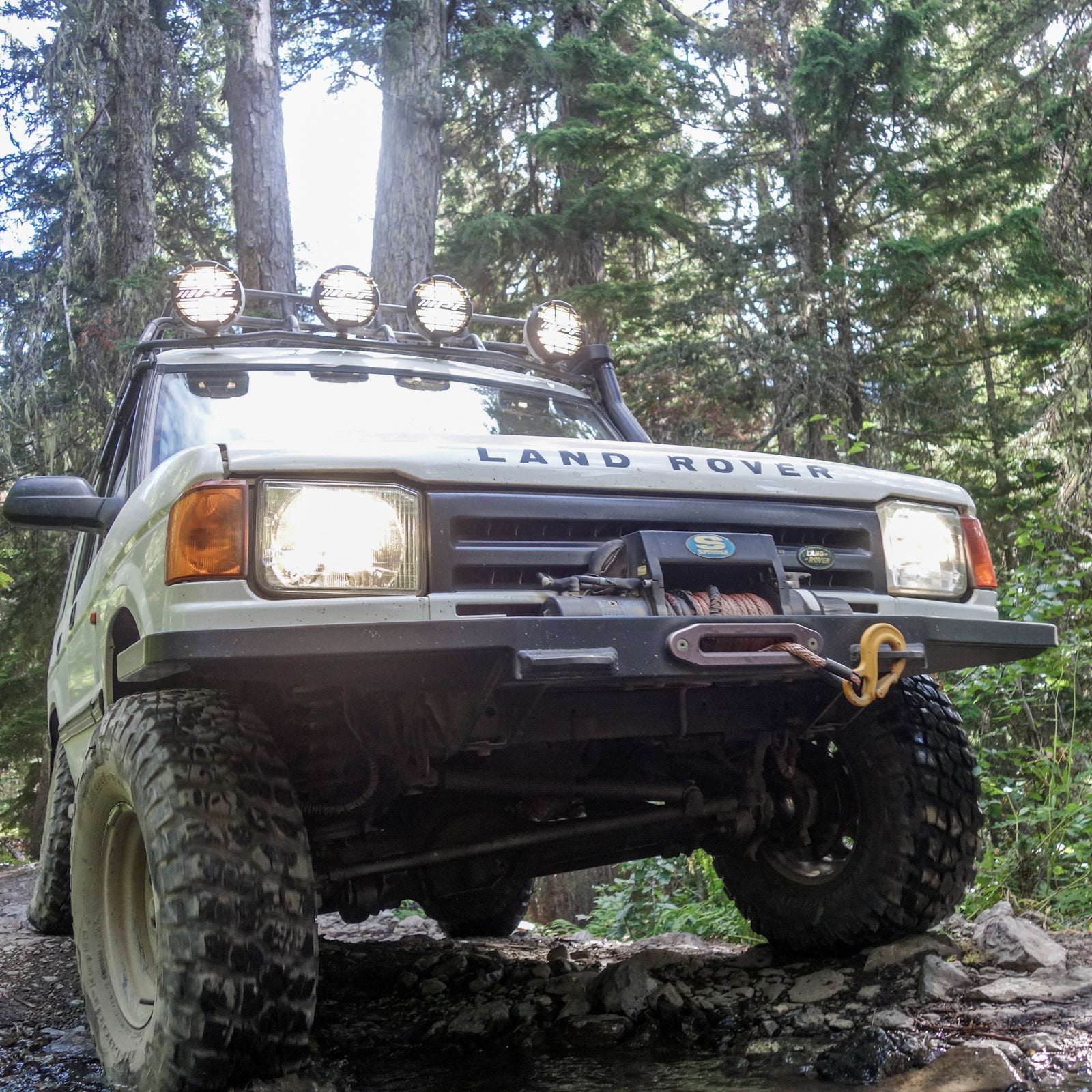August is a good time to hit the road, especially if you live in drought-stricken southern California. So I threw my dog, my bow, and my mountaineering gear into my 1999 Land Rover Discovery SD, and took off for Seattle.
According to the Internet, Land Rovers, especially old ones with 100,000-plus miles on them like mine, are so unreliable that you could never count on them to complete a 3,000-mile road trip without breaking down. At least once. Especially not a trip that includes long days of 85-mile-per-hour highway cruising and hours spent sitting in hot rush hour traffic—interspersed with some off-roading. In fact, that’s about the most mechanically challenging combination of events I could think of.
IndefinitelyWild
 IndefinitelyWild is a lifestyle column telling the story of adventure travel in the outdoors, the vehicles and gear that get us there, and the people we meet along the way. Follow us on , , and .
IndefinitelyWild is a lifestyle column telling the story of adventure travel in the outdoors, the vehicles and gear that get us there, and the people we meet along the way. Follow us on , , and .And this particular Land Rover was not built with highway capability in mind. With incredibly heavy, custom-lathed driveshafts, 33-inch BF Goodrich Mud Terrain tires, full-floating axles, and aftermarket steel wheels, this thing has a ton of momentum in its drivetrain. To change the speed of the vehicle, whether that’s speeding up or slowing down, you first have to overcome the combined momentum of all those heavy things underneath the truck. So it’s not fast, and while the D90 brake calipers ultimately do provide more than adequate power, it’s not quick to brake either.

Those drive shafts were spec’d to overcome one of the Land Rover’s weak points—the stock items are prone to shearing off at speed—but the downside is that, even though they’re balanced, they induce some harmonic vibration to the truck at certain speeds. One of those speed ranges is 75 to 80 miles per hour—right where I’d typically like to be cruising on the highway. It’s more character than it is a problem, but I’ve still been looking for ways to drive around it. I could slow down, but that sounds boring. So my solution, as I’ve gained confidence in the lifted truck’s…unique handling has simply been to speed up. Eighty-five miles per hour is my new sweet spot.
One of the things that that I’ve learned driving this thing is just how critical tire pressures are to virtually every aspect of a vehicle’s performance. That’s equally true in your Prius, but these huge mud terrains really emphasize the effects of even slightly non-optimal PSI. Over 1,200 miles in, arriving in Seattle, I was convinced my bushings were shot, the truck was just shimmying that badly over bumps. I even went so far as to text my buddy Matt at ARB to see if their shop would have time for me to come in and swap them out while I was in town. Then I thought to get out the pressure gauge, only to find that the right rear was down 10 PSI and, once corrected, that fixed the crooked steering wheel I thought I was going to have to correct with the steering box. You may not have to worry about bump steer and death wobbles on your econobox, but this is a good reminder that even there, just being off by a few PSI can significantly impact everything from your handling, to fuel economy, and even your outright safety on the road. Buy a good pressure gauge and check your tires weekly.

I was in Seattle for the month to go bow hunting with my buddy Griff, climb a mountain with my buddy Martin, and to be around for the birth of my buddy Ty’s first kid. The only thing that went according to plan was Mount Baker—the bear wouldn’t come out to play and Wilder only popped out after I’d driven home—but I did manage to make a new friend while I was up there. Owen climbed the mountain with us, and it turned out he has a thing for unreliable old British trucks too, so we hit it off immediately. I stayed in his tiny home on Puget Sound for a week, and there we performed the most serious work I’ve done to the Land Rover since I bought it in February: its second oil change.
One of the unexpected benefits of driving a lifted vehicle is how easy they are to work on. So far, jack stands and wheel ramps have been totally unnecessary (although I will need stands to pull the wheels off and apply some grease to the brake pads this weekend). Even accessing the 4.0-liter V8’s drain plug is just a matter of kneeling down under the front bumper, and reaching with a 1 and 1/8-inch crescent wrench. I can change the oil filter while sitting cross legged, and was able to grease the U-joints while lying on a piece of cardboard. That convenience is nice, but the big benefit is really safety. Despite this Land Rover’s total reliability thus far, it is inevitable that something on it will break at some point, and that will likely be off-road, where jacking isn’t really the safest thing to do. Being able to get underneath, with plenty of room for tools, a helping hand, and a beer—and all without a 5,000 lbs vehicle just waiting to fall on you—is going to make that pending break down much less bad.
One of the things I’m hoping to achieve with this irregular unreliable old vehicle column (I’ll roll in the KTM soon, promise) is to break through the Internet hive mind, and show you that you don’t need to be intimidated by the prospect of owning something awesome, but old. With vehicles like these, reliability isn’t a product of a badge, a country of origin, or some secret sauce from Toyota. It’s a matter of maintenance. By creating a regular schedule of simple-to-achieve jobs, and by replacing wear items before they fail, you too can drive something you’ve always lusted after, and do that without a monthly payment, or even regular rides in a tow truck. After this trip, I’ve racked up a total of 6,000 miles on the Discovery, so some of those service jobs, and even major work like a head gasket replacement are looming. And you’ll be reading about them soon.

Why put up with a vehicle that’s got a bad reputation and compromised on-road handling? Well, on the way home, I looked at a map, picked what looked like the most remote dirt trail I could find, then just turned off the highway and drove down it until I found a place that looked good for camping. There, Wiley and I cooked a T-bone over a fire, howled at the moon, and listened to real wolves howl back. This Land Rover can take us anywhere, including many places most other people will never visit. That’s what makes it worthwhile to me.


